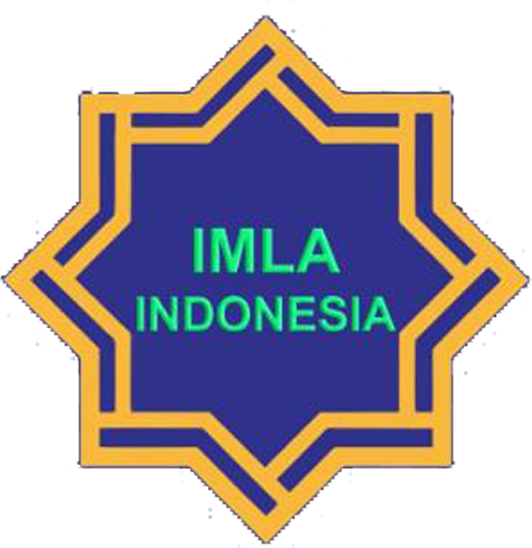Teacher Talk Patterns in Online Learning of Arabic Speaking Skills
Abstract
Classroom interaction is an important aspect in language learning, especially in speaking class. interaction occurs between lecturers and students or between students. However, at the end of 2019 there was a covid-19 outbreak around the world, so offline learning turned to online learning. Therefore, the purpose of this study is to find out the pattern of teacher talk that occurs in Arabic speaking class by online. This qualitative study took data from 4 online speaking Arabic skills class meetings through zoom meetings at the Arabic language department at State University of Malang. Data analysis used the FLINT (Foreign Language Interaction Analysis) framework. The results showed that the pattern of teacher talk in the class was very diverse according to the FLINT categories and only a few used native language, and the most dominant is giving information.
Keywords
Full Text:
PDFReferences
Adedoyin, O. B., & Soykan, E. (2020). Covid-19 pandemic and online learning: the challenges and opportunities. Interactive Learning Environments, 0(0), 1–13. https://doi.org/10.1080/10494820.2020.1813180
Amin, A. R. (2015). Patterns of Teacher - Students Interaction A Case Study of Classroom Interaction in Eleventh Grade of Senior High School in Cimahi. Journal of English and Education, 3(1), 14–29.
Brown, H. D. (2000). Teaching by Principles: An Interactive Approach to Language Pedagogy (Second Edi). Longman.
Cazden, C. B. (2001). Classroom Discourse: The Language of Teaching and Learning (W. Varner (ed.); Second Edi). Heinemann.
Chowdhury, K., & Rashid, M. (2014). Classroom Interaction: Tension between Belief and Practice, a Case Study of a University Teacher. Global Journal of …, 14(3), 28–34. http://socialscienceresearch.org/index.php/GJHSS/article/view/1157
Cook, V. (1991). Second Language Learning ang Language Teaching. Edward Arnold.
Gharbavi, A., & Iravani, H. (2014). ScienceDirect Is Teacher Talk Pernicious to Students ? A Discourse Analysis of Teacher Talk. Procedia - Social and Behavioral Sciences, 98, 552–561. https://doi.org/10.1016/j.sbspro.2014.03.451
Herliani, N. (2016). Interaction Pattern of Teacher-Students in EFL Classroom. Indonesia University of Education.
Ivanovska, L., Kasaposka-Chadlovska, M., & Kolevska-Neshkovska, S. (2020). Online Foreign Language Teaching. IAI Academic Conference Proceedings, May, 57–67.
Kalu, I. (2004). Classroom Interaction Patterns , Teacher and Student Characteristics and Students ’ Learning Outcomes in Physics. 39(2), 24–31.
Kelly, H. J., & Verplaetse, L. S. (2014). Second and Foreign Language Learning Through Classroom Interaction. Routledge: Taylor and Francis Grouop.
Miles, M. B., & Huberman, M. A. (1994). Qualitative Data Analysis an Expanded Sourcebook (2nd ed.). Sage Yin Publication.
Mulyati, A. F. (2013). A Study of Teacher Talk and Student Talk in Verbal Classroom Interaction to Develop Speaking Skill for Young Learners. Journal of English and Education, 1(1), 1–10.
Nurpahmi, S., Islam, U., & Alauddin, N. (2017). Teacher talk in classroom interaction. ETERNAL (English, Teaching, Learning and Research Journal), 31(01), 35–43. https://doi.org/10.24252/Eternal.V31.2017.A4
Rymes, B. (2008). Classroom Discourse Analysis: A Tool for Critical Reflection. 1–368.
Sofyan, R. R., & Mahmud, M. (2014). Teacher Talk in Classroom Interaction : A Study at an English Department in Indonesia. ELT Journal, 1(1).
Suherdi, D. (2010). Classroom Discourse Analysis: A Systemiotic Approach (Revised Ed). CELTICS Press.
Sundari, H. (2017). Classroom Interaction in Teaching English as Foreign Language at Lower Secondary Schools in Indonesia. Advances in Language and Literary Studies, 2012.
DOI: http://dx.doi.org/10.17977/um056v5i2p130-141
Refbacks
- There are currently no refbacks.
Copyright (c) 2021 Zahriyatun Naeli Syarof

This work is licensed under a Creative Commons Attribution-NonCommercial 4.0 International License.
AL-ARABI is indexed by:
Editorial Office:
Al-Arabi: Journal of Teaching Arabic as a Foreign Language
Arabic Department, Faculty of Letters, Universitas Negeri Malang (UM)
Jalan Semarang 5, Malang 65145, Indonesia.
Telephone: (0341) 551312 Ext. 239. Fax (0341) 567475.
E-mail: alarabi@um.ac.id

Al-Arabi: Journal of Teaching Arabic as a Foreign Language is licensed under a Creative Commons Attribution 4.0 International License.
Based on a work at http://journal2.um.ac.id/index.php/alarabi/










